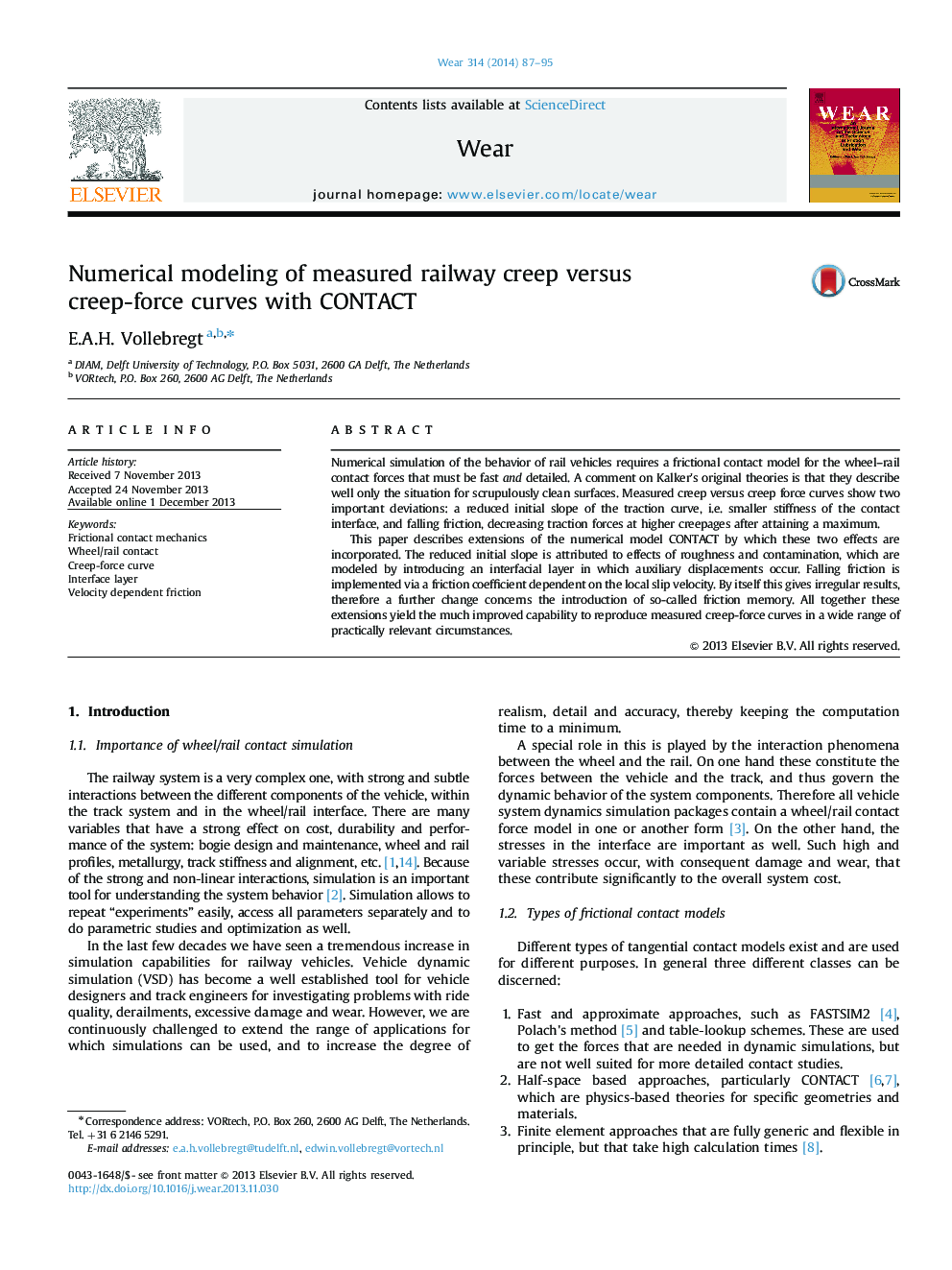| کد مقاله | کد نشریه | سال انتشار | مقاله انگلیسی | نسخه تمام متن |
|---|---|---|---|---|
| 617308 | 1454988 | 2014 | 9 صفحه PDF | دانلود رایگان |

• Measured creep-force curves show marked deviations from Kalker's original theories.
• Kalker's half-space based model CONTACT is extended w.r.t. these effects.
• The reduced initial slope is incorporated in the model using a third body layer.
• Reduction of the force at larger creepages is modeled via a falling friction law.
• Falling friction is regularized by introducing so-called friction memory.
Numerical simulation of the behavior of rail vehicles requires a frictional contact model for the wheel–rail contact forces that must be fast and detailed. A comment on Kalker's original theories is that they describe well only the situation for scrupulously clean surfaces. Measured creep versus creep force curves show two important deviations: a reduced initial slope of the traction curve, i.e. smaller stiffness of the contact interface, and falling friction, decreasing traction forces at higher creepages after attaining a maximum.This paper describes extensions of the numerical model CONTACT by which these two effects are incorporated. The reduced initial slope is attributed to effects of roughness and contamination, which are modeled by introducing an interfacial layer in which auxiliary displacements occur. Falling friction is implemented via a friction coefficient dependent on the local slip velocity. By itself this gives irregular results, therefore a further change concerns the introduction of so-called friction memory. All together these extensions yield the much improved capability to reproduce measured creep-force curves in a wide range of practically relevant circumstances.
Journal: Wear - Volume 314, Issues 1–2, 15 June 2014, Pages 87–95